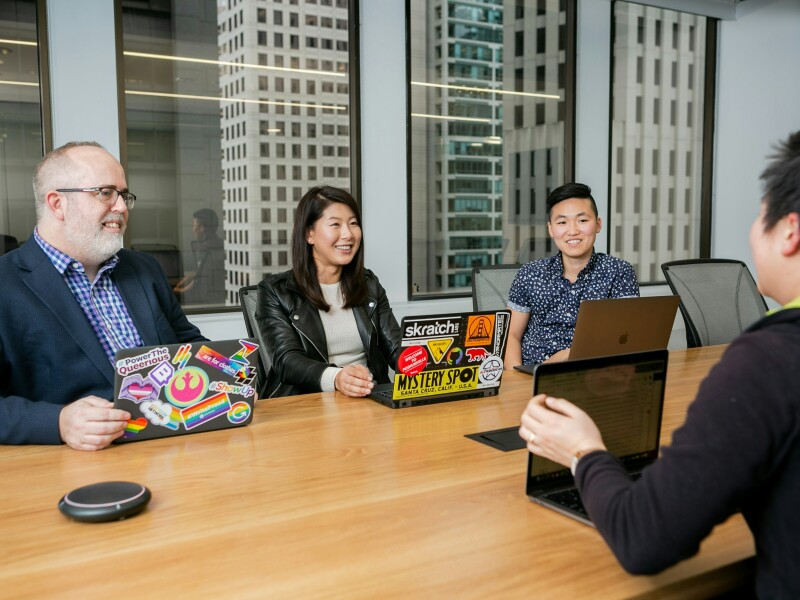DEI-related burnout or DEI fatigue is not an unfamiliar concept in the HR space. Often, DEI is viewed as an HR responsibility and whilst many organisations today have Heads of Diversity, Equity and Inclusion, when this isn’t the case, HR leads often have to take on the duty of promoting DEI initiatives without any adjustments or support to facilitate their success. Additionally, an article by Harvard Business Review focusing on HR and DEI professionals in the United States, found that DEI work is emotionally exhausting in part due to unspoken rules in the workplace about managing emotions when speaking to sceptics or getting pushback. As a result, many HR leads may feel they are fighting a constant uphill battle, ultimately resulting in feelings of fatigue, stress and ultimately burnout.
So how can HR leads get the engagement in DEI they need to truly create a catalyst for positive cultural change? Here we share a few ways this can be achieved.
Uncomfortable Conversations: Engaging Senior Leaders in DEI
Many organisations have DEI programmes in place but sometimes colleagues are unaware they are occurring unless they read a report, newsletter or are engaged in the programmes themselves either as part of the HR team or members of Employee Resource Groups (ERGs). This often indicates that the message doesn’t spread throughout the business and HR leads often struggle with getting upward engagement especially.
HR leads can face obstacles when expressing that these programmes are imperative as is the need for engagement from senior leadership. They may find it difficult to give honest insights on the state of DEI in the organisation out of fear of deterring colleagues from getting involved in DEI entirely. This is why being able to deliver these 'home truths' or honest feedback in a way that is impactful and motivating is essential.
Here are ways HR leads can deliver these home truths effectively:
1. Present The data and Do Your Research
To get interest and investment from senior leadership, data is essential, especially for those who may be sceptical about the need to engage. It is very difficult to argue with objective information and providing fact-based data about the state of DEI in your organisation can help put things into perspective. It can also be helpful to a timeline to show how far you’ve come but additionally show where you intend to go and how, for example through participation in a programme.
2. Create a Safe Space
Psychological Safety is important to create spaces to have open and honest conversations but also for constructive challenge from all sides. Without this environment, people may be withdrawn or apprehensive to engage. One way of achieving this is through having one-to-one conversations or meetings exclusively with the leadership team who may feel more comfortable speaking candidly with each other before going to an open forum.
3. Consider The Timing
When giving feedback to colleagues about the need for participation in a programme, timing is critical. Think about what else may be happening in the business. For example, if your colleagues are overwhelmed or under pressure due to projects or other organisational changes, they could be more sensitive to potentially challenging conversations.
4. Use an Inclusive Leadership 360°
Utilising an inclusive leadership 360 helps leaders get honest feedback from real colleagues which adds a personal element in addition to the data they provide. This unique approach to feedback can also inspire leaders to challenge their ways of thinking, reflect on their development and can be an indirect encouragement to get involved in initiatives or programmes focused on DEI.
Are Diverse Colleagues Doing the Heavy Lifting?
Whilst the responsibility for establishing DEI initiatives and programmes is often placed on HR and DEI leads, DEI fatigue is not exclusive to these roles. People from underrepresented groups can feel the weight and expectations of sharing their experiences to educate their colleagues. This is why it is important to communicate that DEI is everyone’s responsibility.
1. Create Advocates and Allies
Take advantage of senior leaders who are already involved in conversations around DEI. Having them be advocates for driving inclusion can help influence their peers to do the same by setting a positive example. This also sends a message that conversations around DEI aren’t just for diverse colleagues and anyone can get involved. Additionally, it can be encouraging and revitalising for diverse colleagues to see that they aren’t alone in their efforts.
2. Add DEI Related Performance Objectives for Senior Leaders
Adding DEI learning targets is an essential first step in educating colleagues. Many organisations already have platforms that contain resources and courses that are open to all. However, people may view online courses as ‘tick box exercises’ that do not go beyond surface-level learning. Additionally, in-person events are often predominantly attended by colleagues who already have a vested interest in the subject. To get DEI investment from senior leaders encourage them to attend DEI events or participate in programmes such as Reverse Mentoring to educate themselves as part of their performance objectives. This gives them the opportunity to hear from influential voices and experts in the field or colleagues with lived experiences which encourages them to be active rather than passive in their learning.
3. Get Input From Colleagues in Underrepresented Groups
Asking colleagues from underrepresented groups what they would like to see from senior leaders in terms of engagement can create a wealth of ideas. They are experts in their own experiences and view the organisation's culture from a potentially different perspective than senior leaders. By asking what would be helpful in relieving some of the pressure off them, you are getting first-hand feedback that can be used to tailor your approach to getting DEI engagement from senior leadership.
Starting Earlier: Encouraging Your Emerging Leaders to Have an Inclusion Strategy
A long-term inclusion strategy should ideally involve the participation of colleagues who are keen to build their own brand of inclusive leadership. This means that emerging leaders are driving change and all colleagues – not only HR – become active and accountable participants.
The optimal time to engage leaders is when they’re 3-5 years away from the senior leadership or the Executive Team.
Begin by hosting a talent programme like Runway, that actively includes leaders of diverse backgrounds, specialisms and thinking styles, some of whom may not have considered themselves for senior leadership.
Within these programmes, aspiring executives can develop their personal brands as inclusive leaders, and learn that the key traits of inclusive leadership are actually traits of effective leadership in general. Our proprietary ABC Model of Inclusive Leadership is a good place to start.
Accountability
Leaders who approach their roles with humility, recognise that they will make mistakes and are willing to accept and learn from them. Inclusive cultures are accelerated in organisations when leaders are prepared to hold others to account and allow people to call out their own behaviours if they are not inclusive.
Behaviour
Leader role modelling is the single most powerful lever in enabling organisational culture change. Leaders will set a powerful example by knowing and adopting behaviours that make others feel respected, valued, and supported to succeed at work.
Curiosity
Curious leaders develop heightened self-awareness. They are more aware of their personal biases, and how these impact their behaviour, and they are motivated to understand different cultures and how they come together. These leaders adjust their behaviour to their environment and have a growth mindset anchored in their curiosity.
The Power of Networking
As part of their development, colleagues can also learn how to build inclusion into their networking and stakeholder engagement strategies. By seeking mentors and sponsors who are diverse or proactively inclusive, they can increase self-awareness and challenge personal biases.
Leaders can also network across functions, to increase their knowledge of operations, and to co-create a culture of belonging. This influence can have an impact on internal and external communications, prepare the ground for colleague buy-in and also increase knowledge of consumer insights and behaviours.
The School for CEOs’ Dimensions Framework provides a valuable outline for networking building and stakeholder engagement.
Conclusion
Using these methods, HR leads can inspire greater balance and proactivity within the shared organisational goals of DEI. These approaches can create healthy foundations and help to communicate the ‘why’ of DEI to leaders, whilst also providing them with tangible career growth opportunities.
Do you need help in initiating these difficult but transformative conversations?
Learn more about our Inclusive Leadership Work HERE
Or mail info@schoolforceos.com and speak to a member of our team.






